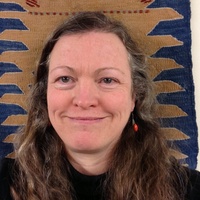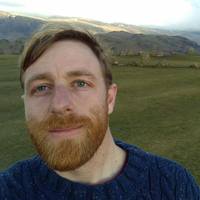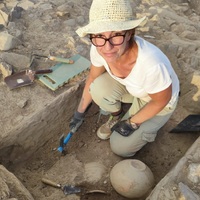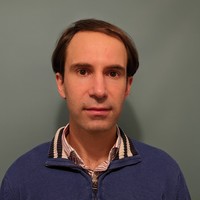
Rachel Pope
I research social organisation in the 1st millennium BC of western Europe. My work focuses on:
• Celts (discovering the regional nature of gender roles and social norms in Early Iron Age Europe from the mortuary evidence)
• Hillfort origins and development (understanding Late Bronze Age-Middle Iron Age social organisation beyond the household)
• Prehistoric houses (roundhouse architecture, set in a contextual understanding of settlement and land use temporality)
More technically, my work is developing new method for a data-led social archaeology, using contextual archaeological studies and multi-variate analysis towards a new understanding of social organisation and the mechanisms of social change.
Address: Department of Archaeology, Classics and Egyptology, University of Liverpool, UK (estab. 1904)
UK #2 for teaching excellence (The Guardian 2019) | UK Top 10 since 2011
Profile: http://www.liv.ac.uk/archaeology-classics-and-egyptology/staff/rachel-pope/
Google Scholar: http://scholar.google.com/citations?user=pp3KvewAAAAJ&hl=en
• Celts (discovering the regional nature of gender roles and social norms in Early Iron Age Europe from the mortuary evidence)
• Hillfort origins and development (understanding Late Bronze Age-Middle Iron Age social organisation beyond the household)
• Prehistoric houses (roundhouse architecture, set in a contextual understanding of settlement and land use temporality)
More technically, my work is developing new method for a data-led social archaeology, using contextual archaeological studies and multi-variate analysis towards a new understanding of social organisation and the mechanisms of social change.
Address: Department of Archaeology, Classics and Egyptology, University of Liverpool, UK (estab. 1904)
UK #2 for teaching excellence (The Guardian 2019) | UK Top 10 since 2011
Profile: http://www.liv.ac.uk/archaeology-classics-and-egyptology/staff/rachel-pope/
Google Scholar: http://scholar.google.com/citations?user=pp3KvewAAAAJ&hl=en
less
Related Authors
Nerissa Russell
Cornell University
Maurizio Forte
Duke University
Carlos Fabião
Universidade de Lisboa
David González-Álvarez
CSIC (Consejo Superior de Investigaciones Científicas-Spanish National Research Council)
Marta Diaz-Guardamino
Durham University
Manuel Fernández-Götz
University of Oxford
Julian Thomas
The University of Manchester
Enrico Cirelli
Università di Bologna
Andrew Heckert
Appalachian State University
Kristian Kristiansen
University of Gothenburg
InterestsView All (32)










Uploads
Celts & Society by Rachel Pope
As critical archaeologists, we can again attempt an objective, contextual study of our material evidence – working from the ground up, in our rejection of top-down social modelling and the uncritical use of analogy. As part of this trajectory, the present authors turn to gender archaeology in the hope of identifying distinctly prehistoric gender identities in the mortuary evidence – Brück’s (1999) ‘prehistoric rationality’. As such, the paper necessarily focuses on those periods whose traditions preserved skeletal material: the Earlier Neolithic long barrows and Chalcolithic/Early Bronze Age round barrows of Wessex (central southern Britain); and the Middle Iron Age inhumations of southern and eastern Britain , in its aim to discover something of the nature of prehistoric gender identities in these periods.
Hillforts & Houses by Rachel Pope
As critical archaeologists, we can again attempt an objective, contextual study of our material evidence – working from the ground up, in our rejection of top-down social modelling and the uncritical use of analogy. As part of this trajectory, the present authors turn to gender archaeology in the hope of identifying distinctly prehistoric gender identities in the mortuary evidence – Brück’s (1999) ‘prehistoric rationality’. As such, the paper necessarily focuses on those periods whose traditions preserved skeletal material: the Earlier Neolithic long barrows and Chalcolithic/Early Bronze Age round barrows of Wessex (central southern Britain); and the Middle Iron Age inhumations of southern and eastern Britain , in its aim to discover something of the nature of prehistoric gender identities in these periods.
appears to be a conscious organising principle, the latter seems to be more a result of the subconscious desire for light and contact, alongside the potential for privacy.
capacious term that is needed to address key medical,
epidemiological and socio-political challenges posed by diverse
symptoms persisting beyond four weeks after symptom onset
suggestive of coronavirus disease 2019 (COVID-19). An international
movement of patients (which includes all six authors) brought the
persistence and heterogeneity of long-term symptoms to widespread
visibility. The same grassroots movement introduced the term ‘Long
Covid’ (and the cognate term ‘long-haulers’) to intervene in relation to
widespread assumptions about disease severity and duration.
Persistent symptoms following severe acute respiratory syndrome
coronavirus 2 (SARS-CoV-2) infection are now one of the most pressing
clinical and public health phenomena to address: their cause(s) is/are
unknown, their effects can be debilitating, and the percentage of
patients affected is unclear, though likely significant. The term ‘Long
Covid’ is now used in scientific literature, the media, and in
interactions with the WHO. Uncertainty regarding its value and
meaning, however, remains. In this Open Letter, we explain the
advantages of the term ‘Long Covid’ and bring clarity to some
pressing issues of use and definition. We also point to the importance
of centring patient experience and expertise in relation to ‘Long Covid’
research, as well as the provision of care and rehabilitation.
Article detailing prominent battle in UK heritage protection: Local people and archaeologists working together to protect the planning principle of heritage setting.